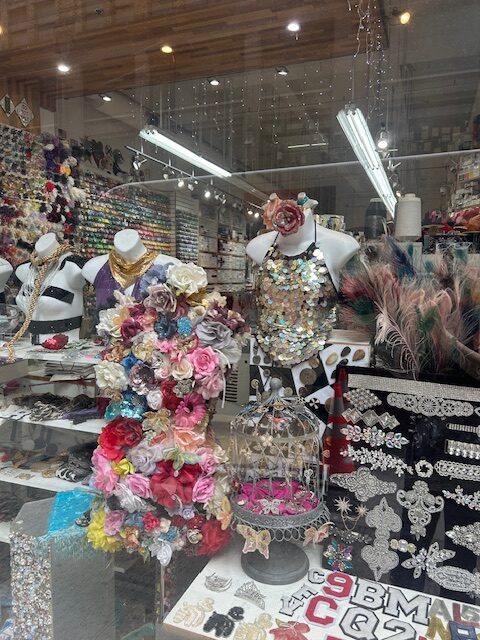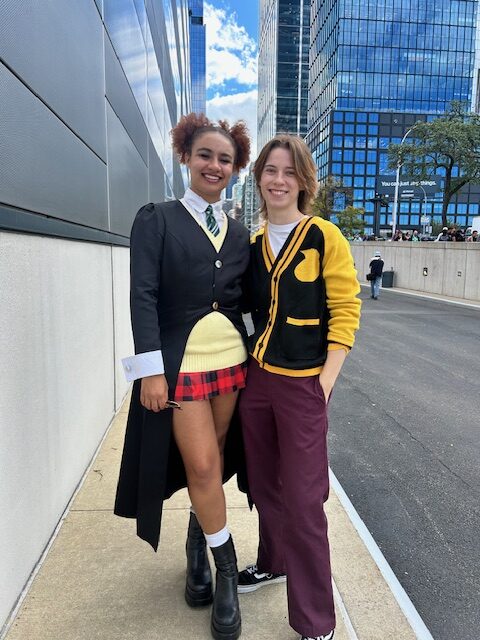This story starts in the wrong area of Springfield Gardens. After two subway rides, my first ride on the Long Island Railroad, and riding two buses, I realized I stepped off at the wrong bus stop. However, where I was dropped off had plenty of significance to the community. I had arrived at Baisley Park Day Care Center, a project that witnessed the murder of Aamir Griffin. Griffin, 14, was the victim of a gang-related shooting that left a lasting effect on that area of Queens as the fourth anniversary of his death nears next month. The center has a basketball court that the people partially converted into a memorial for the late student athlete.
After paying my respects, I met Simon at the Baisley Pond Park. That park was shockingly quiet, we saw a couple of people going for jogs and one gentleman listening to an old school radio. We then walked to the Springfield Garden Park in Queens. There, we noticed several people grilling to celebrate Labor Day. After the Covid-19 pandemic, it has become rarer to see people grilling en masse. It was difficult to break the ice with the people in the park because, personally, I didn’t want to impose on these people’s family time. After the first group of White people politely dismissed us, we had a very illuminating conversation with a Queens native.
Lucy Cannon, a Black woman who appeared to be in her late 50s–perhaps early 60s–was full of life and had plenty to talk to us about. She told us about how she had seen different areas of Queens gradually change over the years and how she moved to different parts of the area as a result. Ms. Cannon told us about her life coming up and how she would always go to the Apollo as a young girl with her mother. She talked about the various talents she would see and how inspiring it was to see young Black talent in a city like New York. I was able to connect with her as a native of New York City, specifically the Bronx. We bonded on that as she told me she had spent time in places that I lived in as a kid. I was able to reconnect with my community at this moment. In talking about where we were from, we were able to talk about how although we were born in certain areas of New York, we still often try to avoid them. As a child, I knew the sort of neighborhood I called home. That said, I also knew my mom worked overtime to shield me from the insanity that existed in my pocket of the Bronx. Even as a grown adult, my mother will text me to ask where I am when she checks my location and sees I’m somewhere new.
I could see and smell the drastic difference in upkeep in the areas when I walked from Baisley Bond Park to the Springfield Gardens.
One thing that I noticed in our walk from the projects in Queens was the cleanliness of the different pockets of the island. When I got to the project, I came to see numerous cigarette buds on the ground, bottles of lemonade, orange juice, and most significantly opened bottles of Don Julio on the benches at the court. While the area of that project was primarily in clean condition, the same could not be said for the surrounding areas. Some buildings were tagged, people were often just loitering at intersections, and others were standing outside smoking either cigarettes or marijuana.
There was a visibly stark contrast as we got to Springfield Gardens, there was a serene silence that we didn’t hear near the ‘F’ train stops. Cannon also told us the reason she stays in her little pocket in Springfield is because there is too much action in the inner portion of the city. However, she mentioned that it was her first time in that park, and they had just finished remodeling the park about a year ago. According to all the people we spoke to, there was limited places to sit and enjoy the park. The reconstruction plan included adding a basketball court, more picnic tables, trees, and a paved path to the barbeque area. This project took about two years to be finished, and the basketball players were very excited about that. After we finished talking to Cannon and her family, we watched some basketball players on the new court. These men were predominantly African American and ranged from 20-50 years of age. It was a nice change of pace to relax and watch these men play basketball.
The sense we picked up was that the people in that park believed that there needed to be more done about the surrounding areas in Springfield Gardens. While Cannon seemed to appreciate what had been done for her home, I understood her to wish there was more done to make other parts of queens more welcoming for others. She told us she almost never goes to the parts of Queens that have subway stops. This should not be the norm, but it is for a lot of New Yorkers as it is for my grandmother. Also from the Bronx, my grandmother now lives in Mount Vernon and seldomly visits the city. While the solution to increase the police presence has seemingly not worked, there are better ways of making change. We can have our governments invest in the communities that need it the most. There is a difference between gentrifying and investing, but there needs to be something that helps keep the communities together.
State governments have always tried to improve the struggling communities and neighborhoods. The problem is almost never the idea, it’s the execution. When there are communities riddled with gang violence or poverty, the community’s leaders will try to fix the problems that arise. The main issue starts with housing, as the resolution often results in a rise in property value, leading to an increase in rent. This very fact forces a lot of the lower-income people to have to move elsewhere out of necessity since they can no longer pay to live where they have been living. A perfect example of this is in Compton, CA where half of the city is now non-Black and the other half is the same as the stories we would hear from natives like Kendrick Lamar or Dr. Dre.
The gentlemen we spoke to told us the community is quite close-knit. They said they all play basketball together more frequently, and from what I could tell those individuals play together a lot. My biggest takeaway from both of those groupings of conversations was the strong sense of community and respect everyone had for each other. Simon and I were able to experience this firsthand before we left.
Before we left, there was a third family we had introduced ourselves to in an effort to have one final conversation. Before we could even get the words out that we were working, a woman named Trisha offered us burgers and water as she saw we were out there roughly as long as they were. This gesture made my day for several reasons: the first being that I was starving and at that point, I had only eaten a bit of fruit after a two-hour commute and four-hour canvas of the area. The second was it showed me the sense of love of community I grew up with is not completely forgotten. After I left New York, I was always told that the city I knew didn’t exist anymore. While that isn’t entirely false, it was refreshing to have an example of that unity be presented firsthand.


